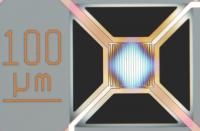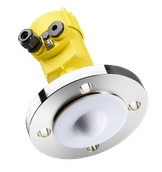New NanoMarkets Report States That Printed and Organic Sensor Market to Reach $2.3 Billion
Advertisement
The market for printed and organic sensors will reach $2.3 billion by 2015, according to a new study from NanoMarkets LC, an industry analyst firm based here. The report is the next in the firm's ongoing coverage of thin film, organic and printed electronics.
NanoMarkets believes that sensors represent an especially attractive opportunity for printed and organic electronics firms because unlike displays and RFIDs, printed and organic sensors are areas relatively underserved by existing manufacturers. In addition to their attractive price points, printed and organic sensors manufactured on flexible substrates provide the means for new markets to be developed in medical, architecture and construction, protective clothing, smart labels and packaging, robotics, aerospace, national defense and automotive applications.
Key findings of the report include:
- Environmental monitoring needs accurate and inexpensive long-term monitoring of environmental contaminants. Biosensors created with printed electrodes or organic transistors could offer an inexpensive solution and electronic noses using conductive polymers could provide real-time identification of contaminants. By 2015, environmental monitoring will be the largest single segment of the printed and organic sensor market at $925 million
- Genetic testing, forensics, pharmaceutical manufacture and a broad range of academic disciplines have exploded following the completion of the Humane Genome Project. As a result there is a surging demand for microarrays and biochips, which are expected to reach $413 million by 2015. Agilent is already inkjet printing all of its microarrays.
- The lowered costs associated with printing and organic electronics is also accelerating the trend towards replacing expensive centralized diagnostic equipment with lower cost point-of-care and home testing. Biosensors are a major part of the trend as are printed touch sensors which can be used to diagnose muscular and bone diseases. By 2015 the printed/organic medical diagnostic and therapeutic sensor market (microarrays and biochips excluded) will reach $414 million.
- Smart textiles offer considerable potential for sensors. Applications include garments that adapt to changing temperature and body suits that monitor human physiological state and communicate to a central system. Smart fabrics would better allow the military to communicate, respond to emergencies and achieve informational and situational awareness advantages. The value of printed and organic sensors used in smart textiles is expected to reach $226 million by 2015.
Other news from the department business & finance
These products might interest you
Most read news
More news from our other portals
See the theme worlds for related content
Topic world Sensor technology
Sensor technology has revolutionized the chemical industry by providing accurate, timely and reliable data across a wide range of processes. From monitoring critical parameters in production lines to early detection of potential malfunctions or hazards, sensors are the silent sentinels that ensure quality, efficiency and safety.

Topic world Sensor technology
Sensor technology has revolutionized the chemical industry by providing accurate, timely and reliable data across a wide range of processes. From monitoring critical parameters in production lines to early detection of potential malfunctions or hazards, sensors are the silent sentinels that ensure quality, efficiency and safety.




























































